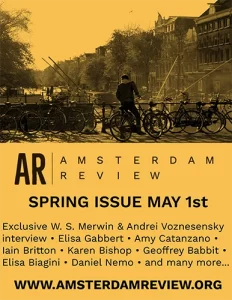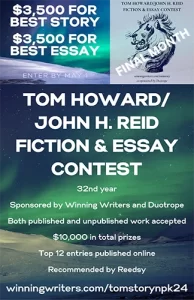Journal of Renga & Renku – December 2010
Issue 1
December 2010
Annual
John Palen
What are the connections linking these three stanzas?
What are the connections linking these three stanzas?
mosaic pieces dissolve
into a Turner scene
he photographs
her naked body
out of focus
a star is born
…a billion star years away
And these?
a puff of wind sends
a thousand seeds adrift
birdsong descending
onto the meadow
becomes a skylark
Lazy Sunday afternoon
a ride in grandpa’s Buick
Once you get it—once you see that each stanza simultaneously picks up something from the previous one and turns the poem in a new direction—you understand something basic about the ancient Japanese art of linked verse that is this magazine’s focus and title. At their best, the poems take you on a tour of existence into places you thought you couldn’t get to from here. And once the penny drops on “skylark” and “Buick,” you understand the zany wordplay that often serves as a guide.
The first stanza set is from “Billows of Pear Blossoms” by Hortensia Anderson and Eiko Yachimoto. The second is from “Knee Deep in Dandelions” by Tomislav Maretic, Mary White, Barbara A. Taylor, and Andrew Caldicott. Either is a good place to start on this magazine’s inaugural issue, but you probably could dip in almost anywhere with equal surprise and pleasure.
I’d recommend finding one or two poems that you like, savoring them and pondering how they work, before going on to any of the prose essays. These do provide helpful background, especially H. Mack Horton’s “Gradus ad Mount Tsukuba: An Introduction to the Culture of Japanese Linked Verse.”
Horton describes how poets hired to produce art of high seriousness for the Japanese court took a break from their day jobs to collaborate and compete on the linked verse called renga. Eventually, the masters of the form raised it to “serious and perhaps even canonical status,” and turned to lighter, sometimes bawdy linked verse called renku for relaxation and fun. This, in its turn, was raised to high art by Basho and others. Eventually, renga and renku became “more a topic of study than of active composition” but currently are undergoing a revival of interest not only in Japan but elsewhere globally.
Another interesting essay, this one focused more closely on technique, is John E. Carley’s “The Mechanics of White Space (or Basho Cranks-up the Action).” If you’re having trouble seeing some of the linkages in the poems, Carley’s explanation of Basho’s innovative “scent linkage” can help. And for those who want to explore further, there’s an annotated bibliography.
But lest this all sound like puzzle solving and scholarship, the journal demonstrates that, high art or not, the fun has never gone out of linked verse. Some is written over months by mail or email. Some is composed in sign language, or in all-day and all-night sessions surrounded by drink and hubbub. While most is collaborative, some practitioners write alone, just themselves and their alter egos. Some stanzas are “contributed” by folks like Basho, Shakespeare, or Rachel Carson.
Rules abound. The moon must be mentioned in this stanza, a blossom in that one. But the rules seem to exist to be broken. Or mocked, as in this pair from “Winter Clarity” by Josh Wikoff, Billie Dee and Moira Richards:
a three-line
non-seasonal, 15-syllable
verse goes here?
the renku master
refills his sake cup.
There’s even a crossword puzzle.
[www.darlingtonrichards.com/index.php/journal-of-renga-renku/]




